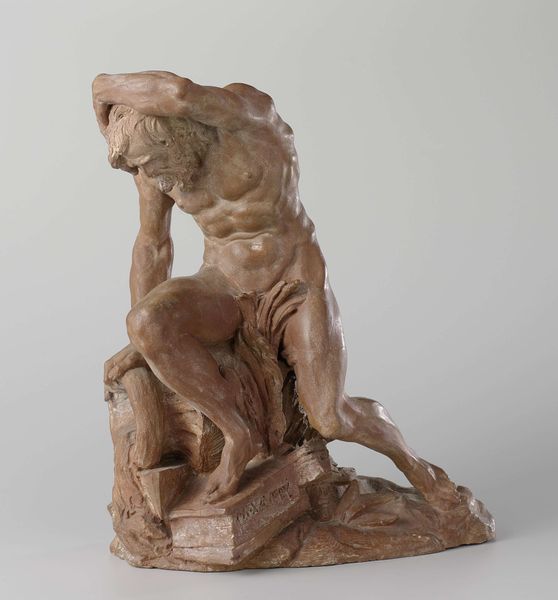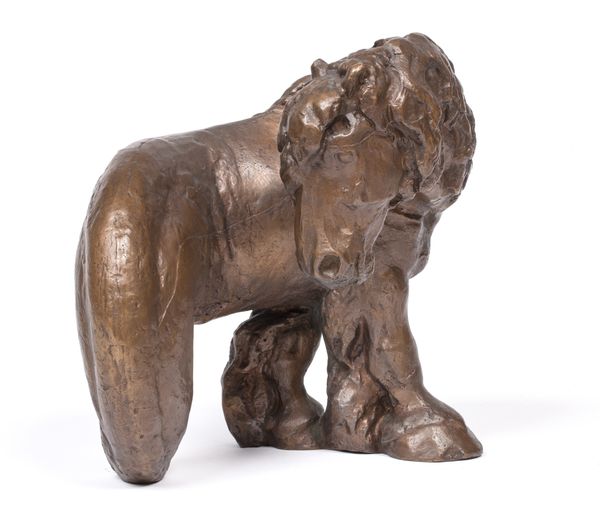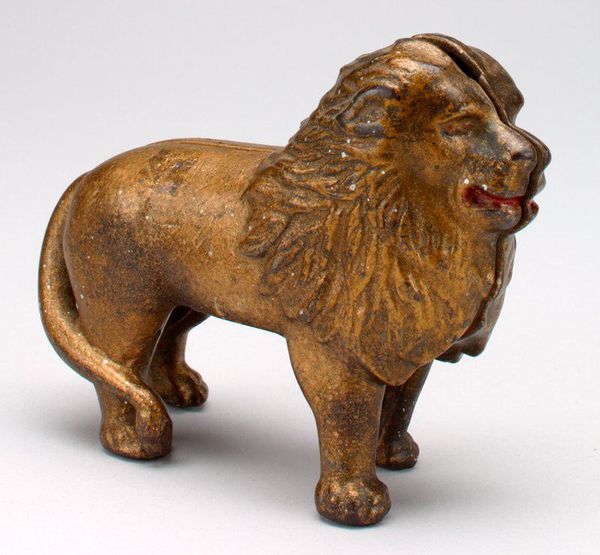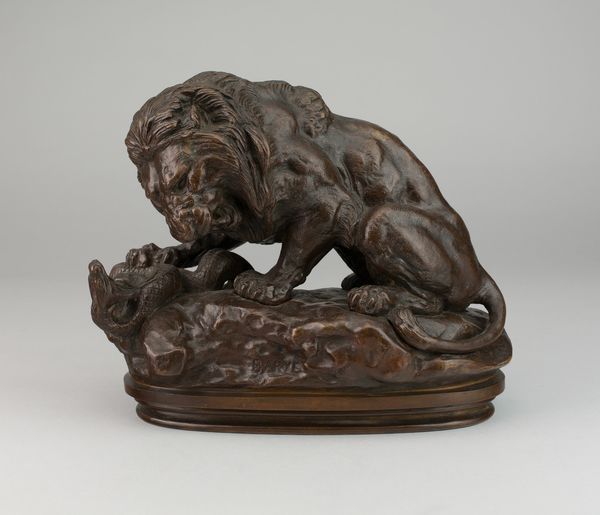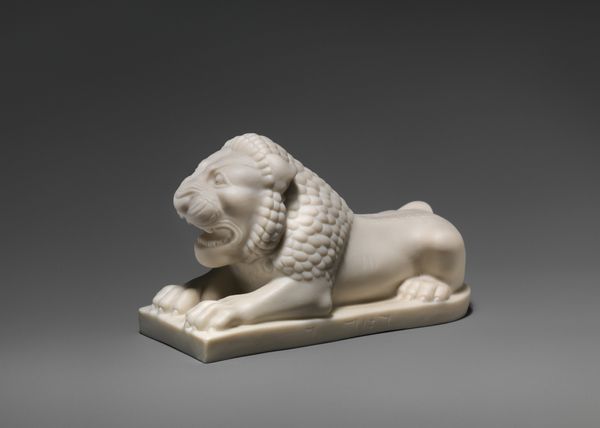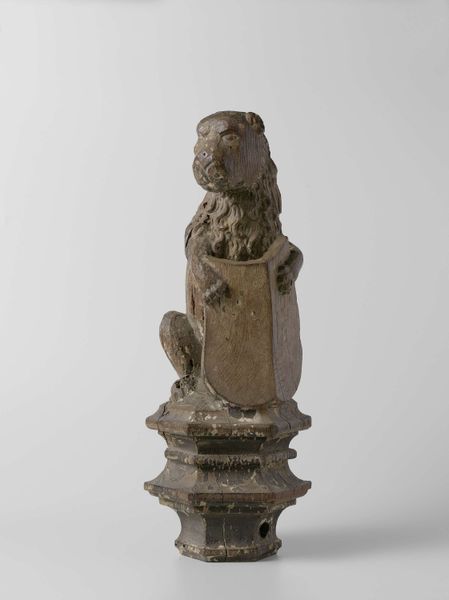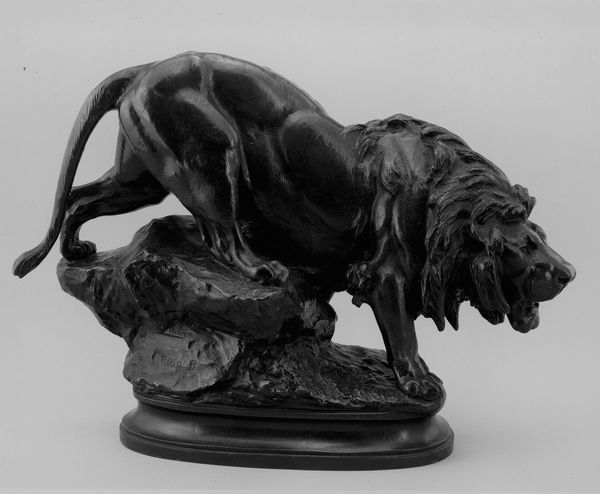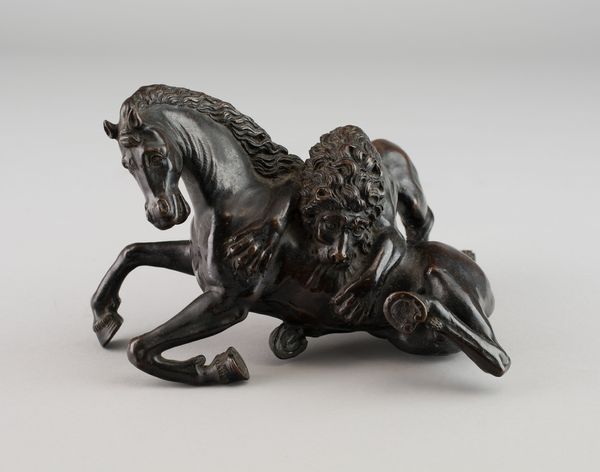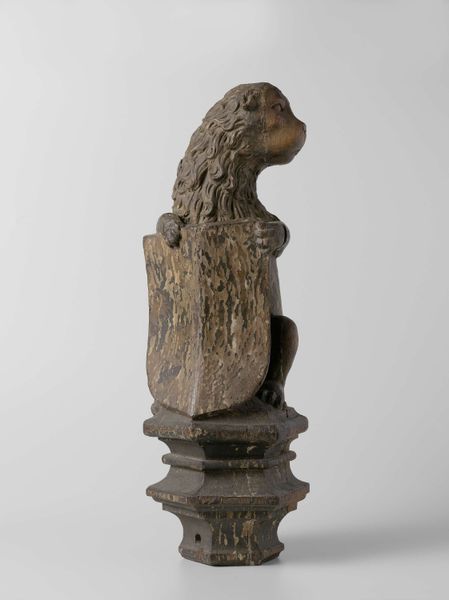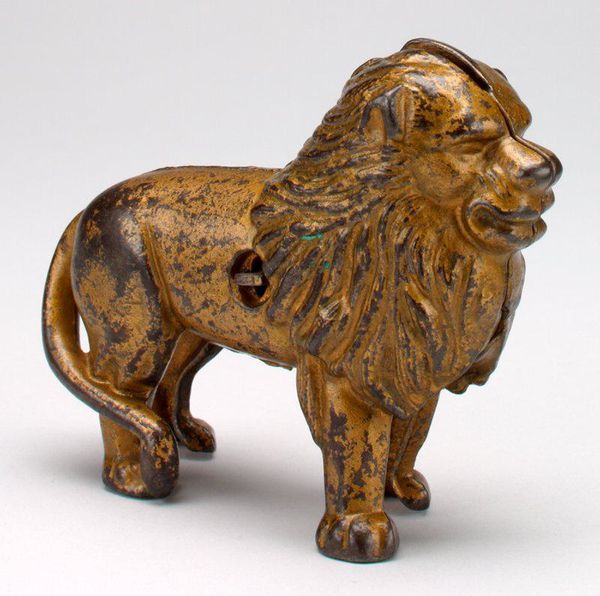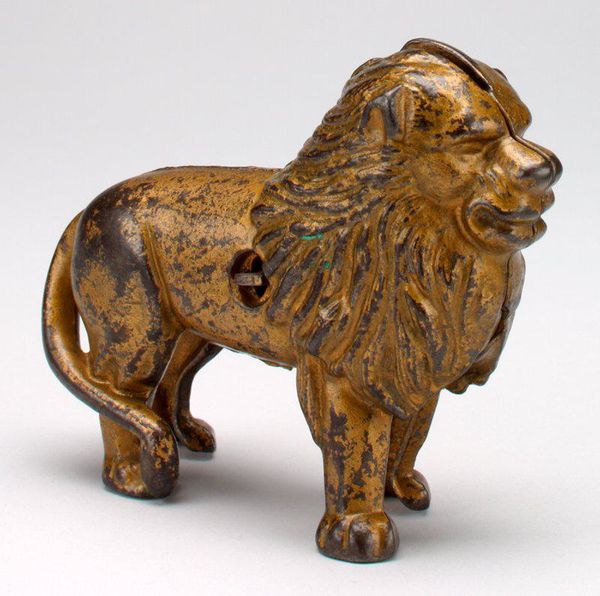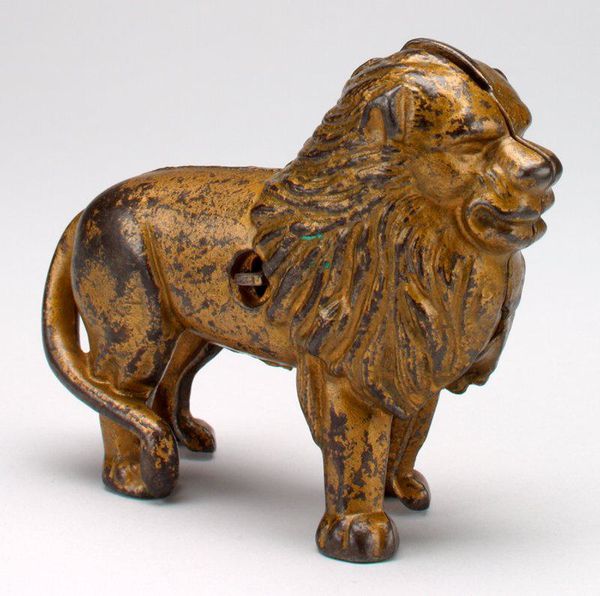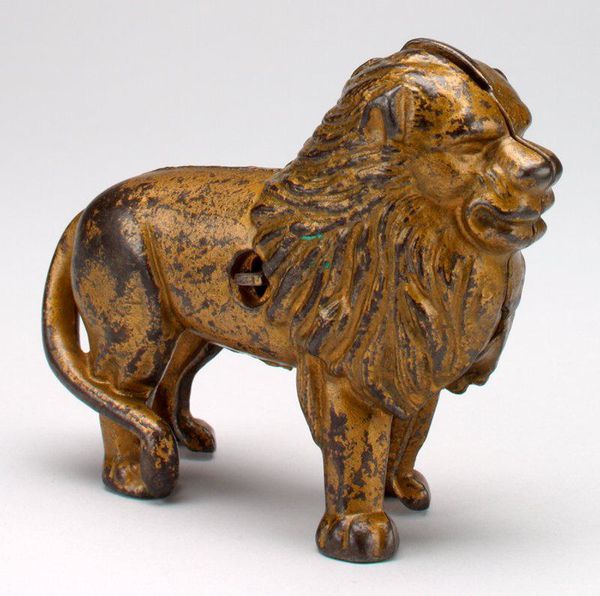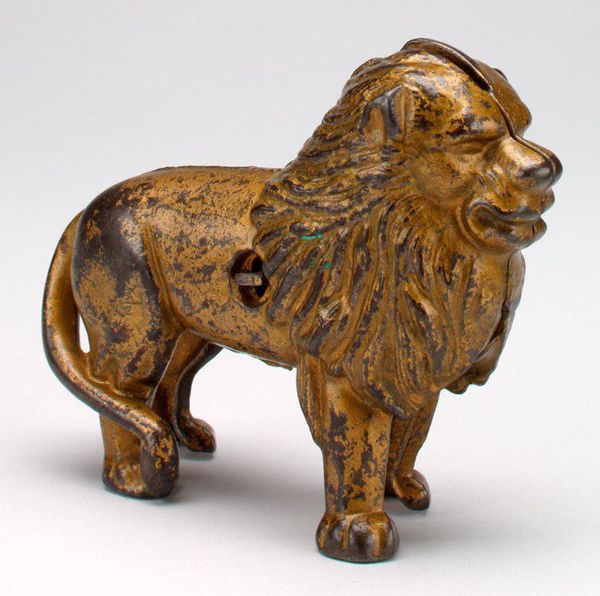
bronze, sculpture, wood, marble
#
statue
#
sculpture
#
bronze
#
figuration
#
sculpture
#
symbolism
#
wood
#
marble
#
statue
Dimensions: 72 cm (height) x 75.5 cm (width) x 81.5 cm (depth) (Netto)
Editor: Right, so here we have Niels Skovgaard's "Havhesten," created around 1910-1911. It's a bronze sculpture. What strikes me most is its enigmatic quality; it feels like a relic from a forgotten mythology. How do you read this piece? Curator: It does have that feel, doesn’t it? Almost like something unearthed. For me, the power lies in its deliberate crudeness. Skovgaard wasn't interested in slick realism. Look at the rough texture, the almost primitive carving of the face. It feels intentionally…archaic. It makes you wonder what he’s trying to evoke. Is it a specific sea-myth or something deeper, a primal connection to the ocean itself? The vacant pool below makes you want to touch it. See your reflection. Wonder what lives there. Don't you think? Editor: I see what you mean. The rough carving contrasts sharply with the smooth curves of the body. Almost a rejection of classical sculpture? Curator: Precisely! A conscious step away. Symbolism was all about inner landscapes, right? And what's more powerfully evocative than the untamed sea? Skovgaard isn’t trying to just represent a sea horse; he's trying to channel the raw, unknowable force of nature. This is more a talisman or icon. It would be nice to dive in, and what do you imagine would happen if you did? Editor: I like the talisman idea! I definitely came into this conversation focused on visual description and not with a sense of story. Thanks for helping me approach art with more imaginative license! Curator: Absolutely! Now, next time, tell me about the hidden stories *you* find in art. It's where the magic truly lies.
Comments
No comments
Be the first to comment and join the conversation on the ultimate creative platform.
